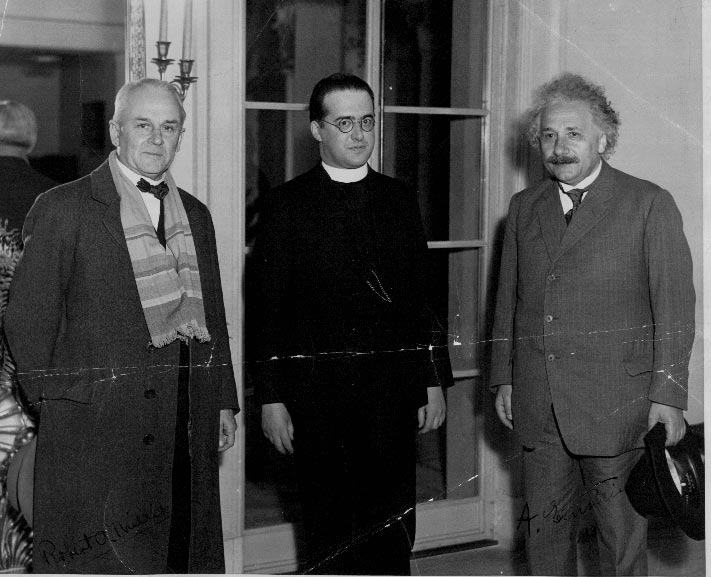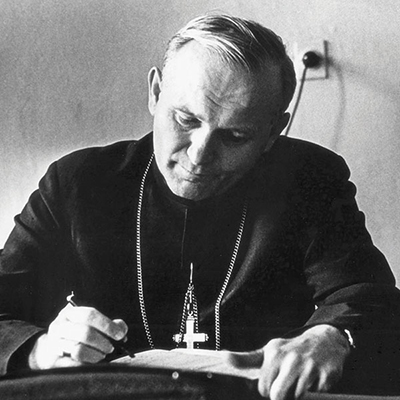Why Does Integrating Faith and Reason Matter?

One of the great effects of John Paul II’s encyclical of 1998, Fides et Ratio (Faith and Reason), is that some Catholic universities began thinking again about the integration of faith and reason. Many at these institutions read and studied the document. And in some cases, the language of “faith and reason” became part of the institution’s self-understanding and public communications.
But even now, almost twenty-three years later, when asked to speak about how the integration of faith and reason shapes the concrete details of their institution—its courses and curriculum, its student affairs policies, its approach to hiring and faculty formation, the articulation of its vision and mission—faculty and administrators often find themselves at a loss.
And we should not be surprised. This is a difficult topic. While the encyclical itself is one of the greatest papal writings of the twentieth century, its author never intended to provide a recipe or a one-size-fits-all blueprint for those leading and teaching at Catholic universities. Instead, each of us has been given the task of thinking deeply about this question, clarifying the nature of each and their relation, and then applying the fruits of this reflection to our own particular institutions.
As we undertake this task, some immediate but overlapping formulations may be set aside. First, there is no “balancing of faith and reason” as if they were two ends of a teeter-totter, where when one goes up the other goes down. This is sometimes thought of as a zero-sum “God-of-the-gaps” approach in which faith fills in the lacunae where reason (or science) has yet to provide its answers.
Second, faith and reason are not separate nets that capture different aspects of human experience—one thinks of Stephen Jay Gould’s non-overlapping magisteria—in which faith captures “values” on the one hand and reason captures “facts” on the other. Such a view was championed in an early form by David Hume and remains alive within the broader popular culture. But philosophers, including Alasdair MacIntyre, have shown its error.
And third, faith and reason are not distinguished by giving reason free reign within the world beyond our minds while faith constitutes part of our subjective, private experience. The consequences of such a view have been applied aggressively by those who would limit religious freedom to “freedom of worship,” cutting off any expressions or applications of religious belief within the public square or beyond houses of worship.
So how might we properly think about the relation between faith and reason and then instantiate it within the Catholic university for the good of our students? Excellent books have been written on this subject and warrant our attention. By necessity, these remarks will be introductory and brief.
Giving birth to the integration of faith and reason through wonder and humility
Each member of the faculty, administration, and staff can begin in silence with a disposition of humility. We must be ready to receive the gift of wonder (a gift with which we were all born but many lose along the way), knowing that there is so much that we do not know and desiring to begin that journey of discovery.
We can receive the gift of wonder in a variety of ways. This might take place by being reawakened by one wiser than ourselves, beginning to see the natural world in deep and sustained ways, or by taking the risk to enter into the uncharted waters of a classic book. And then we can dare to receive the invitation to behold a unified vision of reality with its Author just offstage. If we do these things, we will have taken the first step. We may then propose to our students that they join us, allowing wonder to reawaken within them, to begin to climb toward the light where their vision will be clearer, where they can glimpse a unified vision of reality and intuit the source of this unity.
Without such a beginning, one marked by humility and wonder, the integration of faith and reason will always remain unintelligible and seem like the wishful, pious, and sentimental thinking that marks the fool’s errand. But if we make this beginning, we can undertake—with our students—the ascent to a unified vision.
An integrated vision: through faith and reason we can contemplate a single, fundamental reality
Let us think of faith and reason as two windows upon a single reality. Creating and holding that reality in existence is the God who is the author of all truth. There is significant overlap in the vision that we see through our two windows but also distinctive parts of the reality that we see uniquely through each. (Think of an overlapping Venn diagram.) The single reality that we can behold through these windows is organically whole in itself and invites us to be open to receiving it in its fullness.
The disciplines of academic study, the experiences of the fully human life, the goods at which our hopes aim, and the beauty in which we delight, all participate in and form parts of this larger, inexhaustible reality. This reality summons us to come up ever higher and to go ever deeper into an intelligible reality that is fundamentally unified because it comes from a single Author.

An integrated narrative: through faith and reason we can understand the stories of our lives
If the idea of an integrated vision of reality—seen through faith and reason—is the beginning, it need not be the end. This vision can become the hermeneutic key through which the narratives of our experience can unfold in intelligible and coherent ways. We can help our students confidently come to know the stories of their lives and know that their lives have an Author.
As a communion of persons within the university, no matter our role, we can propose that the stage on which our temporal reality unfolds was born from an Author and we can invite our students to see that their lives has a beginning, middle and end, objectively as well as subjectively. Their lives have a meaning that existed before they did and they have been invited by the Author to discover that meaning and not simply to impose a meaning on an otherwise meaningless chaos. Here, faculty member, administrator, staff, and student speak to one another as person-to-person within the story of the world.
An integrated knowing: Through faith and reason we can achieve integrated lives and knowledge with confidence
From within this unity of vision and narrative, we and our students can discover that the intellectual and spiritual dimensions of life spring from the same source. A student can come to know that his or her course in particle physics and the daily celebration of the liturgy in the collegiate chapel are not only not antithetical but originate from a single source. This understanding in turn affects how university administrators and faculty members cultivate the spiritual and academic dimensions of their institutions and how these are received by the students. It affects how faculty frame their courses and how they respond to the unscripted questions of students that may be of the utmost importance yet never appear on a syllabus or an exam.
In addition to the applications that have already been suggested, there are further academic and personal practices close at hand in which an integration of faith and reason can bear fruit. We need not succumb to the despair induced by skepticism, struggles between the disciplines, and relativism. As indicated above, the vision granted by this integration allows the subterranean unity of the disciplines to be discovered, the whole of human knowing in which every discipline has a place and harmony between the disciplines can be sustained. It allows critical distinctions between the theoretical (for-their-own-sake) disciplines and practical disciplines to be made as well as illuminates where such disciplines overlap. And finally, this vision establishes a confidence in the human capacity to know: if the knower and the created-to-be-known come from the same source, then the latter will be—at least in part—knowable.
An integrated flourishing over a full human life
Most faculty and administrators at Catholic universities hope that their students will not only flourish while they are students but will flourish across the full range of their lives and ultimately arrive at the destination for which they were created. Thus, the integration of faith and reason, at a personal level, can continue to bear fruit for decades after graduation at a deeply personal level.
For example, it seems clear that when our personal narratives—the stories of our lives—break down or no longer make sense, we lose our way, sometimes with tragic consequences. When our students’ narratives become incoherent—whether while at the university, at midlife, or in old age—they may turn to behavior, ideas, or some combination of the two, that will lead to personal shipwreck. Relativism and skepticism—postmodernity’s Scylla and Charybdis—when they have insinuated themselves into one’s personal life, culminate in meaninglessness and despair. No one wants this for our students, our children, or ourselves.
By proposing an integration of faith and reason, we offer our students a gift that will bring order out of the fragmented and disjointed bodies of knowledge, introduce them to a journey from the darkness of Plato’s cave to the vision of the Good, and offer a path that can lead them to lives of meaning and flourishing. What more could we want for our students?
The Dominicans, through their series “Aquinas 101,” have produced an excellent introduction to this topic through a short video.